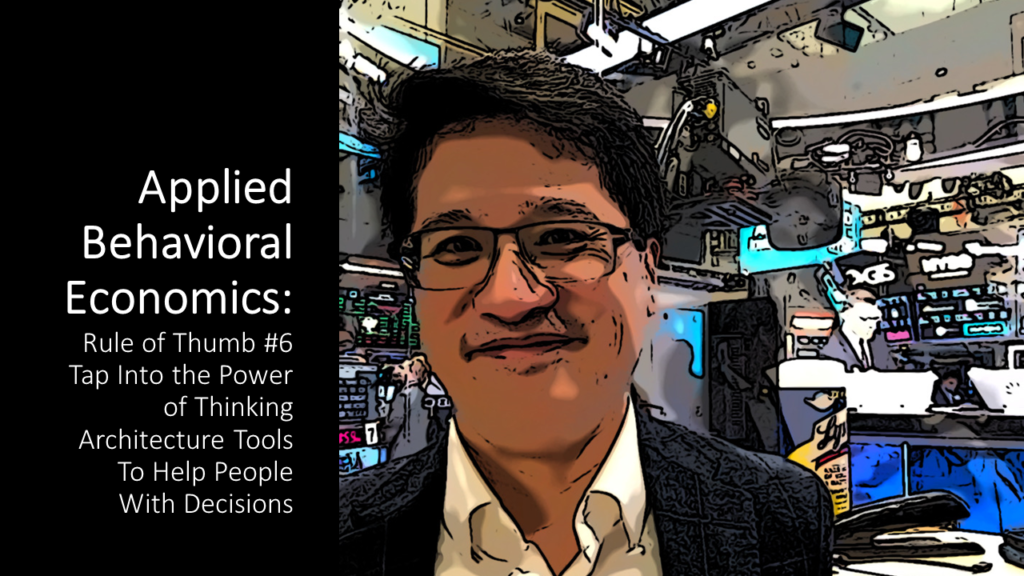
Yesterday I outlined five primary areas of behavioral architecture that we would cover during the academic semester. Two prominent ones we covered included choice architecture (e.g., how choices are presented, such as with respect to defaults and number of choice options) and information architecture (e.g., how information is presented, such as percent of salary versus pennies for every dollar you earn).
As a third area, I framed thinking architecture as the process by which an architect tries to encourage end users to use more slow, reflective thinking versus fast, intuitive thinking. A classic question that tries to illustrate this is the following:
A bat and ball together cost $1.10. The bat costs $1.00 more than the ball. How much does the ball cost?
It is tempting for many people to think that the ball costs $0.10 (based on fast, intuitive thinking), although the correct answer is $0.05.
One form of thinking architecture could have been to get users to follow a checklist:
- Write down your guess for the ball cost (e.g., $0.10).
- Add $1 to the ball cost and write that number down as the bat cost (e.g., $1.10).
- Add the ball and bat cost (e.g., $1.20)
- If the numbers don’t add up to $1.10, repeat step 1.
In my view of thinking architecture, we are essentially trying to slow down both the brain to try to get the mind to follow certain thinking pathways. Whereas neoclassic economics doesn’t account for thinking pathways, path dependency is everything in psychology and affects behavior.
Implementations of thinking architecture space have been less explored. However, the possibilities are endless. Some examples include:
- Addressing complexity (e.g., aviation pre-flight checklists for pilots)
- Helping to avoid common errors (e.g., blindspots such as forgotten opportunities as to how I might want to use money in retirement or risks of underinsuring myself when younger)
- Expanding the thinking (e.g., are there other potential ways of realizing goals during retirement)
- Weighing difficult tradeoffs (e.g., should the money be used to save a single life or implement an equipment upgrade)
Thinking architecture requires thoughtful design, and it is not always the easiest to implement. However, the human mind is an amazing wonder. Sometimes we need to really tap into its power.
References: Frederick, Shane. “Cognitive reflection and decision making.” Journal of Economic Perspectives 19, no. 4 (2005): 25-42.
